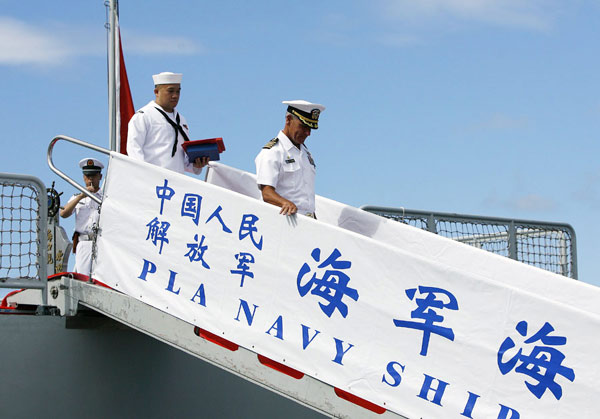
One country's demand for resources fits another's push for growth
Zambia was the first developing country in southern Africa to establish diplomatic relations with China. Over the years, these good relations have included increasing economic and trade ties. The country's pillar industry, mining, has become the world's fourth-largest copper exporter and the second-largest cobalt exporter.
As for China, it faces pressure as a result of a shortage of resources, employment pressure and a growing population, and limited domestic market sales channels. In short, China needs overseas resources. As such, developing economic relations between China and Zambia is entirely appropriate to the common interests of both. China is now Zambia's second-largest trade partner.
By September last year, 500 Chinese companies had registered in Zambia, in agriculture, the automotive industry, construction, engineering, finance, manufacturing, mining, textiles and transport, with total investment of $2.6 billion, and creating more than 50,000 jobs locally.
In addition, Chinese small and medium-sized enterprises have begun to invest in Zambia in recent years, mainly in brick and cement making, catering services, iron and steel smelting, medical services and wood processing, which in turn have created opportunities for growth and created jobs in the country's domestic infrastructure and services market.
On the outskirts of the capital, Lusaka, is the China Economic and Trade Cooperation Zone, in which Chinese businesses promote economic and trade cooperation between the two countries. It was founded in February 2007 with a planned area of about 17 square kilometers.
The zone is divided into two parks, each of which is aimed at encouraging businesses to go global and allowing them to assist Zambia in building more industrial projects that will help it bolster trade.
Over seven years the park has accumulated investment of $1.24 billion. By the end of last year, total operating revenue was $7.9 billion, and it had created 7,600 jobs for locals. So far 30 companies have settled there. Lusaka International Airport is not far from the park, so it caters to central and southern African markets, focusing on the development of business services, modern agriculture, processing, manufacturing, real estate, and ancillary services. It is positioned as an airport industrial park run on a free trade zone development model.
The park's main asset is its ability to provide businesses with a secure service platform, breaking barriers and helping companies quickly open their markets.
Even if a business has good opportunities for growth and good investment, when it is settling in, it will encounter problems. The park has put in place measures and incentives aimed at improving the efficiency of services and has reduced the time it takes to obtain government approval for certain projects.
In addition, to provide ancillary services, including water, electricity, waste disposal, human resources, work permits and security, both sides need to put a great deal of effort into preliminary work. Increasingly more Chinese businesses are taking a look at the Lusaka park.
After analyzing local market demand, the development of related industries and the basic needs of people, many Chinese businesses have been able to improve the quality of their products and services.
Among the large Chinese state-owned enterprises that have settled in are China Nonferrous Metal Mining, China State Farms Agribusiness, Beijing General Research Institute of Mining and Metallurgy, Qingdao Textile Corporation and Shenzhen ZTE Corporation.
From the start of 2005, China granted tariff-free treatment to some categories of Zambian imports. From July 1, 2007, the number of tariff-free goods increased to 466. Last year, bilateral trade was worth $3.5 billion, an increase of 5 percent from the previous year, of which China's exports to Zambia were worth $770 million and imports $2.73 billion.
China mainly exports to Zambia pharmaceuticals, small machinery, clothing, electrical appliances, footwear, tires and ceramics, and China mainly imports from Zambia copper and cobalt metals.
In addition, the joint development of mineral resources in Zambia has made great progress. The Chambishi copper mine production project is China's largest investment project in Zambia, with planned investment of $150 million. Chambishi is the first offshore non-ferrous metal mine the Chinese government has approved and is a landmark project of China-Africa cooperation.
The author is a professor at Nankai University in Tianjin, who specializes in China-Africa investment and market policies.
(China Daily Africa Weekly 06/27/2014 page9)








